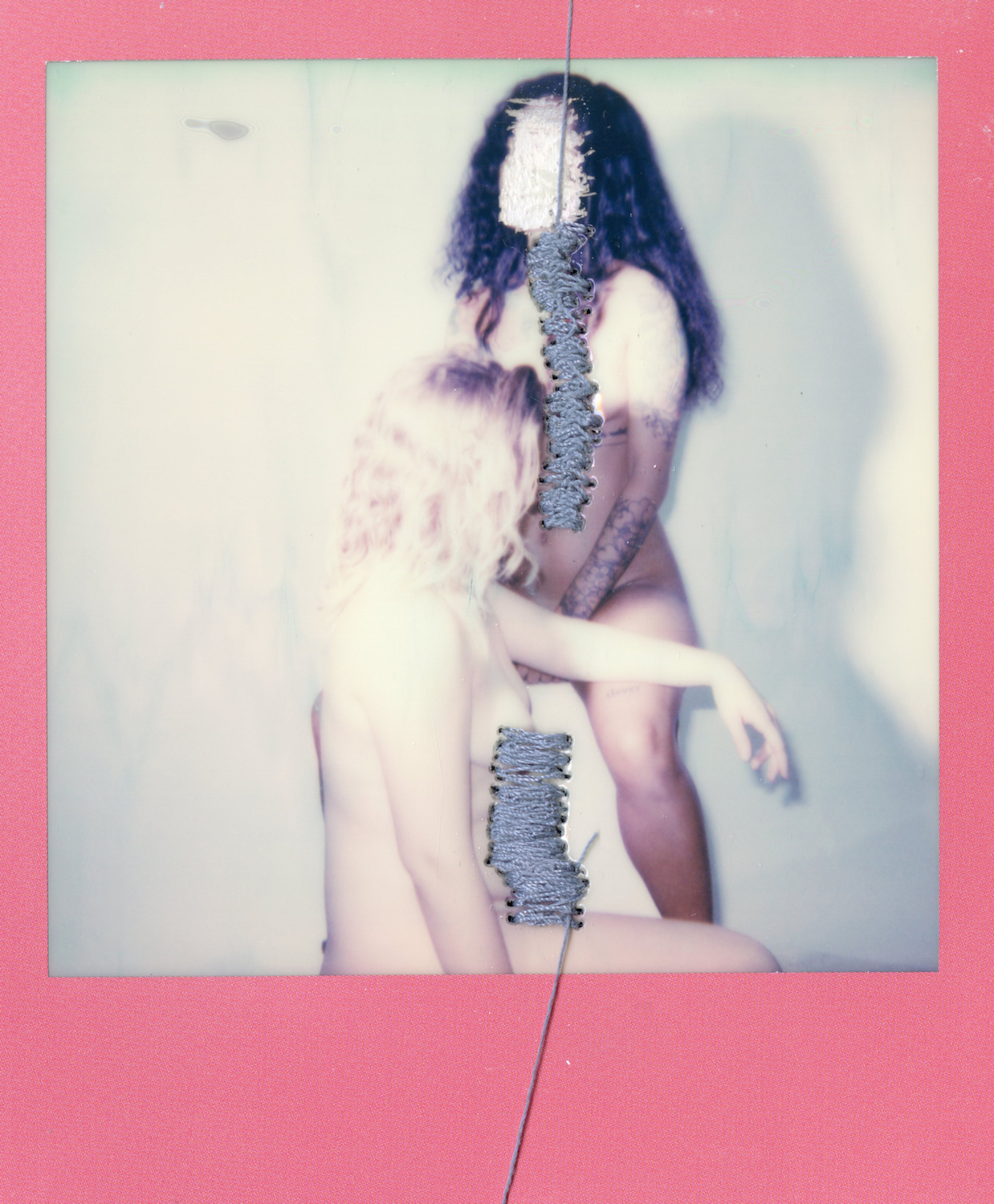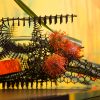The start of 2020 has already been a busy year for artist Nakemiah Williams, or Kiki, as she is known by her community and peers. In January, she had won the Student Award for Excellence in the Honolulu Printmaker’s 92nd Annual Juried Exhibition at the Honolulu Museum of Art School, also known as Linekona. In the same week, she participated in Person/Persona, a group photo exhibition at Ars Cafe with her Polaroids. All of this while preparing for a group show at Treehouse and beginning a new body of work for her senior thesis show just a few months away.
Originally from New Jersey, Williams spent 16 years in the U.S. Army, which took her to Fort Hood, Texas; Seoul, Korea; and finally Honolulu, Hawai‘i, where she arrived in 2013. Not long after touching down in Honolulu, where she and her husband were to spend their next duty assignment together, Williams was sent to a private facility in Utah for women who had been sexually assaulted by fellow military service members.
It was there where Williams began to address her post-traumatic stress from being raped while she was stationed in Seoul, she told me. The incident had left her with crippling depression, suicidal tendencies, and speech loss. By meeting other women who had similar experiences, she found connection amid her pain. Utah was where she first understood that art and creativity could be a pathway for healing, an avenue to communicate what she couldn’t vocalize.
After three months, she returned to Honolulu. Soon after, she decided to retire from the military. For Williams, Hawai‘i was where she was able to learn how to be a civilian again and find a new purpose through her art studies at Honolulu Community College. “Hawai‘i was a refuge for me,” she says. “It is where I found my voice.”
In my art, I have control. It’s my voice. It’s my body. It’s the message that I want to send out.


Control Over Her Art
Transferring to the University of Hawai‘i at Mānoa for a bachelor of fine arts degree, Williams soon found her creative stride within the medium of the Polaroid. Today, she works almost exclusively in this manual format, using manipulation techniques—scratching, subtracting, adding, rearranging, and decaying through a water emulsion process—to create new compositions.
When we met for an interview at Linekona, she showed me her Polaroids, revealing the careful incisions she made at the tops of the photographs to separate the film from its protective layer. Her process is tactile. Physical. She suspends the film in water, playing with its processing chemicals—sometimes adding the image layer from one Polaroid to another—to manipulate its look.
“In my art, I have control. It’s my voice. It’s my body. It’s the message that I want to send out,” Williams said. Her practice is a way of reclaiming her agency.
Published here are altered Polaroids from two bodies of work. “The Spaces You Left Empty” is dedicated to Williams’ husband, who is stationed in Washington. She shot vignettes of the home they shared together, creating haunting compositions depicting scenes in domestic spaces—a dinner table, a shoe rack, a closet, a toilet. Scratched out, removed, and replaced are the spaces left void after her husband’s departure. “Stitched” introduces the element of thread, which Williams sewed on by hand and with a machine.
Vulnerable Forms
These Polaroids depict models in the nude, predominantly women, including the artist. Their faces are scratched and obscured beyond recognition. The thread can be viewed as connective, holding the body together and covering sections of the body like bandages. It can also be read as pathways reaching outside the confines of the frame.
For Williams, depicting the nude form, and becoming a subject in her own work, was a means for making herself and others vulnerable, as a way to form connections and find beauty in painful realities.




In the gallery at Linekona, Williams shared her story with me as we stood in front of her enlarged digital prints. Experiencing her work in this format is very different. While it was much easier to see the fine detail of her process, the intimacy of scanning every corner of each 3-by-3-inch frame is lost.
But then the docent overseeing the show, an artist and longtime member of the Honolulu Printmakers, joined in the conversation. Seeing this as an opportunity to learn and speak more eloquently about Williams’ work, he asked probing questions about her process and subject matter.
She opened up willingly.
And then, in a moment of relation, he opened up too, saying that having been sexually abused as a child, he was able to process his own pain through writing.
Perhaps there is some truth to adages about time.
Time heals the pain.
Time is a gift.
Or maybe it’s more about how we use our time, which determines whether or not we can truly heal and be a gift to others.
Josh Tengan is a curator and writer from Pauoa, Kona, O‘ahu, with a focus on contemporary art from Hawai‘i, Moananuiākea, and its diasporic communities.
This is the second piece, Nakemiah Williams, that ran in our Flux Feature “Aperture Everlasting“, click to read Kenyatta Kelechi and Mark Kushimi.






